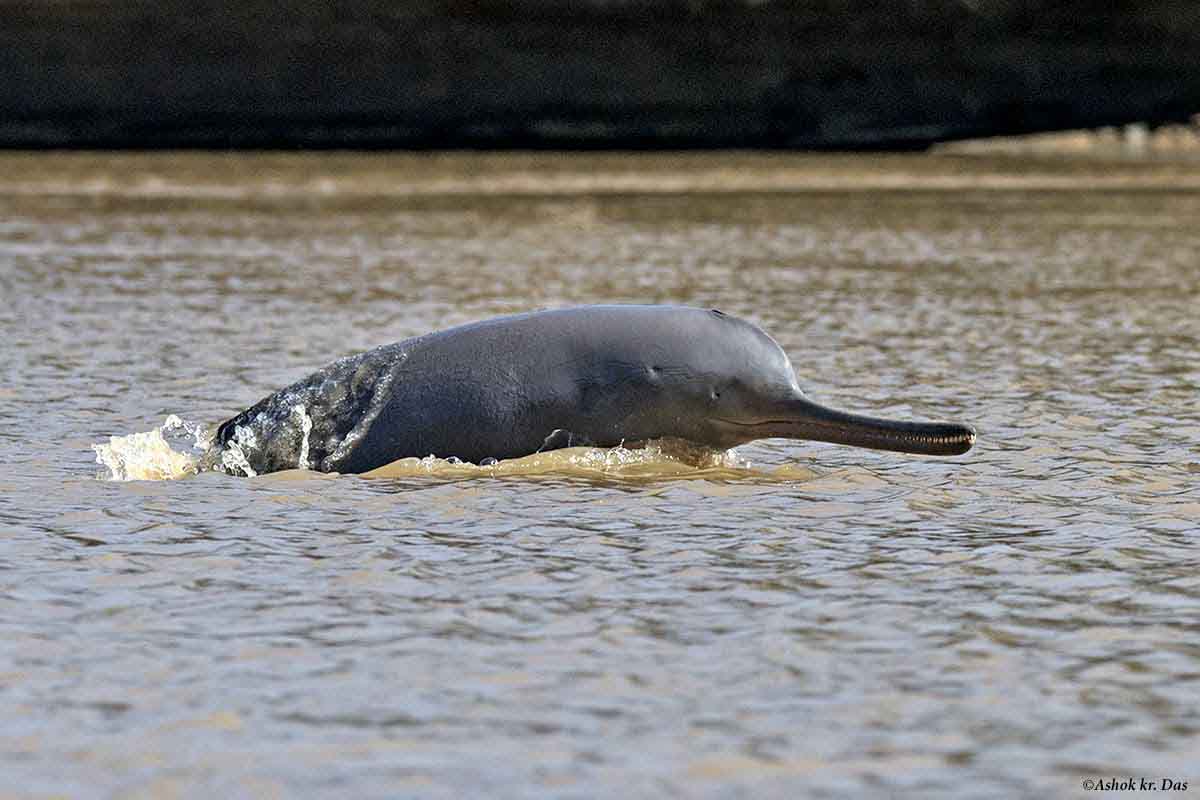Heritage bookstore in College St set to open new outlet
Dasgupta, the well-known heritage bookstore in the city, is going to open its outlet in south Kolkata on 1 May.
Dr. Roy Chowdhury said, “Over the years, due to rise in saline levels, these creatures are receding from the forest waters.”

The upper Gangetic stretch is known for fresh water dolphins. (Image: Facebook/@Ashoks-Wildlife-Photography)
A day after the full moon in the world’s largest mangrove forest, marine biologist Dr. Mahua Roy Chowdhury, set sail during the high tide, riding with strong currents, to spot one of the most elusive and endangered species of the Sunderbans- the Platanista Gangetica or Gangetic dolphins.
The researcher testified to The Statesman that the timing struck wonders for her as she spotted a pod of playful Gangetic dolphins, against the strong current created by the high tides in the mighty rivers that flow into the heart of this “tide country” where change is inevitable while adaptation can be arduous.
“Of adult dolphins, their head and dorsal fins can be spotted while a calf does a complete U-turn when it jumps out and into the water,” she highlighted. Dr. Roy Chowdhury said, “Over the years, due to rise in saline levels, these creatures are receding from the forest waters.”
Advertisement
Post-Cyclone Amphan, the marine biologist fears, the abnormal spurt in saline levels may rule out possibilities of further sightings of these mammals in Sunderbans area which is rapidly losing out on its freshwater due to rising sea-levels while the Farakka Barrage has cut-off the in-flow of freshwater to the myriad of streams and channels of the world’s largest mangrove forest.
The Platanista Gangetica have long snouts and prefer dwelling in freshwater unlike their Irrawaddy counterparts Orcaella Brevirostris, with short snouts resembling killer whales and preferring saline waters, said Dr Roy Chowdhury who meticulously studied these species in her surveys in Sunderbans. During her recent surveys, she had spotted pods of the Gangetic dolphins in atleast six to seven pockets in the deltaic region.
Recalling from her volumes of research data, she mentioned the Hatania Doania River near Namkhana in Kakdwip sub-division- a part of the Sunderban settlements – where she spotted 18 to 20 Gangetic dolphins. She highlighted that these mammals need certain hydrological parameters to thrive, including factors like good depth, high tide and confluences.
The high tide brings forth bountiful fish with strong currents which pleases their appetites. The marine biologist is, however, optimistic that what may be lost on the swings, can be gained on the roundabouts. She pointed out, with these dolphins retreating from the Sunderbans area, the chances of sightings will increase in the upper stretches of the river beyond Farakka.
She backed her claims saying a good number of Gangetic dolphins were spotted near Diamond Harbour while at present, with the onset of monsoon, chances of spotting these agile and intelligent creatures, near the confluence of Rupnarayan, Damodar and Mundeshwari Rivers, are ripe.
She had spotted around eight in this location during her surveys. Dr. Roy Chowdhury added, “Sunderbans though still have a healthy presence of Ganges sharks while the Irrawaddy dolphins could be spotted even a good six to seven years back in the region.”
Advertisement